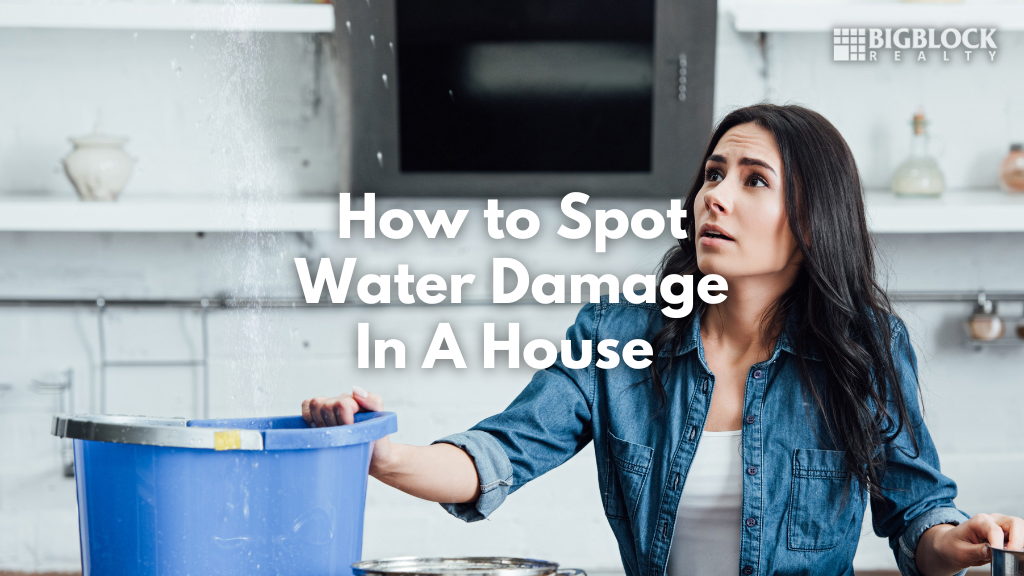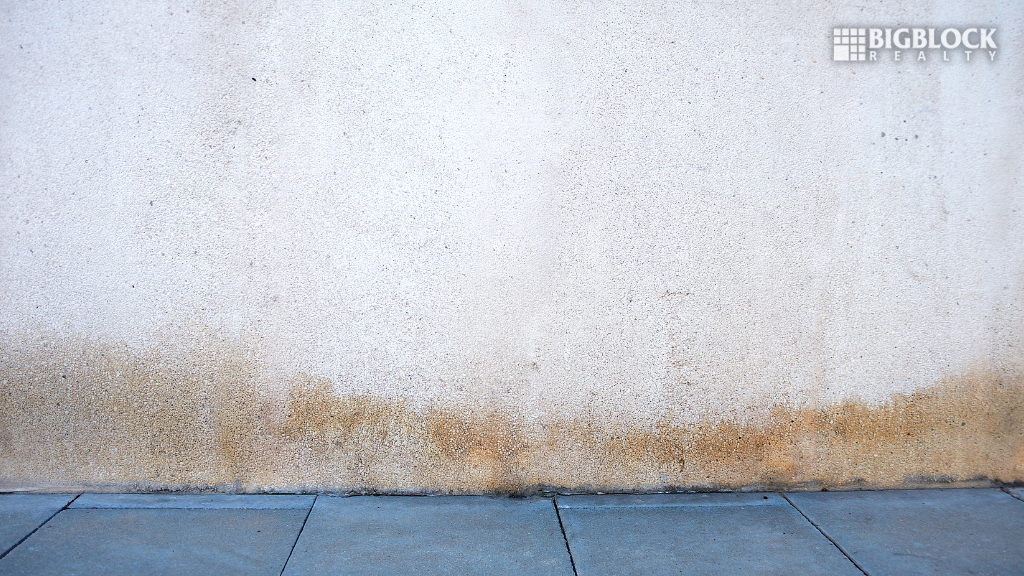 Buying a house with water damage can cost you lots of money. Learn how to spot water damage in a house.
Buying a house with water damage can cost you lots of money. Learn how to spot water damage in a house.
If you don’t know what to look for when inspecting a house, you’re interested in buying this article will give you important tips.
KEY TAKEAWAYS
- Water damage in a house can lead to expensive repairs.
- Doing a water damage inspection before buying a house will save you money.
- Learn what to look for to spot water damage in a house.
- This post covers all the visible signs of water damage in a home.
- Repairing water-damaged houses prevent health issues for you and your family.
Find Out How to Spot Water Damage In A House
Learn What Water Damage Looks Like
Before visiting homes, you are considering buying read the following tips about what water damage looks like. You must take water damage seriously not only because of the expensive repairs they require. Also, water damage leads to many health problems that can affect you and your family like asthma, allergies, and respiratory issues.
Know that not all water damages are visible. Leaking water behind walls, under floors, or in the attic and basement requires proper inspection.
Spotting water damage in a house before purchasing will save you lots of money.
Here are 18 signs that a house has water damage.
1. Water Stains
First, look for signs of water stains. They are easy to spot. Look for yellow water stains forming on floors, ceilings, and walls. These are visible signs of water damage due to an undetected water leak.
Pay attention to the corners where the wall meets the floor and ceiling for any discoloration.
2. Rotting Wood
Look for any rotten wood in the house. Soft spots are signs of water damage. Untreated wood sucks water and then begins to rot. Look at wooden doors, baseboards, and floors to see if the wood is in good condition.
Also, look at wooden furniture whose backs rub against walls and bottoms touch floors and carpets. Warped floorboards indicate water damage.
3. Swollen Drywall
Drywall also absorbs excess water caused by heavy rainfall or leaking water pipes. You can see the swollen effect when the drywall begins to bubble. This is a sign of water trouble behind the drywall.
4. Strong Humid Smell
Excess humidity creates a distinct foul odor. It may remind you of the smell of rotten eggs. Sniff around the house to see if this unique smell exists.
5. Paint in Poor Condition
Water damage and excess humidity also affect paint. Look for signs of paint discoloration, bubbling, or peeling off. These are signs of water damage.
6. Do You Hear Sounds of Leaks?
Dripping water sounds in the house means a leak. If the noise comes from the ceiling, behind walls, or underneath the floors you know where to start looking for the origin of the leaking water.
7. Mold Growth
Mold occurs when moisture and oxygen meet. Other than seeing a small amount of mold on a shower curtain, mold is a serious problem. Mold means either a water leak or humidity problems. If you can’t locate excess water leakage, you need a professional inspection.
Signs of mold growing inside or outside the house mean heavy water damage. Mold is unsafe to breathe for the nose and lungs. This is a potential health hazard for you and your family.
8. Large Cracks on the Ceiling and Walls
Look for big cracks on the ceilings, floors, and walls. Often, they are signs of water leaks or foundation structure problems
Also, look for water rings or stains on the walls or ceilings. They may mean a leaking pipe.
9. Damp Walls
Water damage behind walls is not easy to spot. They are not always visible. Yet, there are steps you can take to identify it.
Indefinite high moisture never dries. Place your hands on the walls to feel the moisture. If you feel dampness it is the result of water damage.
Sniff for mildew or musty odors. Look for mold growth, especially near plumbing areas. Water stains on the walls, warped walls, or peeling wallpaper are signs of potential water damage.
Dampness also can appear on counters due to the accumulation of water on surfaces. Look for a nearby leak.
10. Water Damage on Wooden Floors
Hardwood floors experiencing water damage show stains and discoloration. Also, floorboards will lift where the nails can’t hold them down. Warping wooden floors means water damage. Soft spots on the flooring usually mean water damage.
11. Kitchen Floor
Leaking kitchen appliances needing repair leads to water damage. Make sure the dishwasher, and nearby washing machines don’t leak
Refrigerators supplying water and ice can also leak. Make sure the kitchen sink or pipes doesn’t leak.
12. Bathrooms
Bathtubs, showers, and sinks may leak. Inspect the pipes and test them for leaks. Look out for sagging or soft spots on the bathroom floor.
Look for cracked bathroom tile. Inspect the caulking in and around the tub and shower. Dark mold needs to be cleaned.
GOT QUESTIONS?
13. Damaged Roof
Water that accumulates on the roof leaves tell-tale signs. Look for dents or broken/missing shingles which water caused.
14. Attic and Basement Water Damage
Poorly maintained basement or attic creates water damage. A leaking water heater, rain penetration, or a broken or leaky water pipe causes water damage.
These rooms are usually first affected by broken or leaky water pipes. Heavy rainwater also accumulates in these rooms.
Foundation problems often start in the basement. Look for cracks and signs of water penetration. Look for signs of past burst pipes or a flooded basement.
Basement water damage destroys drywall, flooring, storage items, and furniture. If not fixed in time, water damage leads to mold and the inevitable musty odor. Pay special attention to the walls for signs of water stains.
15. Rusted Metals
Water causes metals to rust. Closely inspect metal fixtures, furniture, and other items for signs of rust.
16. Loose Caulking
Check out the bathrooms for loose caulking. Look around the water pipes for signs of loosening caulking. They are probably caused by water leakage near those areas.
17. Exterior Damage
Look at the house exterior for puddles or sloping ground towards the house. These are usually caused by water damage due to water accumulating on the sides of the house and seeping in.
Make sure the house has downspouts that divert water away from the home. Inspect the gutters to verify they work properly and don’t leak.
Look if the house sits on the highest point of the property. The ground should slope away from the house. If not, the foundation may experience water damage.
Inspect the exterior door and window frames for any separation or soft spots indicating water damage. Separation leads to humidity entering the house leading to mold.
18. New Construction Water Seepage
Even new houses can have water leaks. Look for small puddles at the bottom of the walls. This occurs due to improperly sealed concrete allowing moisture to seep in. Look at the ceilings for signs of a drip line.
Bonus: After Purchasing a Home
Health Issues
Sudden respiratory health problems in your family may be caused by water-induced mold.
If these types of health issues suddenly occur don’t wait for brown spots to appear on walls. Call in a professional inspector to look for mold or other causes of respiratory health issues.
How to Spot Water Damage In A House – Conclusion
We explained 18 visible signs of how to spot water damage in a house. These include:
- Water stains;
- Rotting wood;
- Swollen drywall;
- Strong humid smell;
- Paint in poor condition;
- Hearing sounds of leaks
- Mold growth;
- Large cracks on the ceilings and walls;
- Damp walls;
- Water damage on wooden floors;
- Kitchen floor stains;
- Bathroom floors sag or have soft spots;
- Damaged roof;
- Attic and basement water damage;
- Rusted metals;
- Loose caulking;
- Exterior damage; and
- New construction water seepage.
Looking To Buy a House in San Diego County?
Big Block Realty provides you with over a hundred helpful blog posts. Also, we provide you with an experienced Realtor who knows the neighborhoods that fit your lifestyle and budget. No matter where in San Diego County you wish to relocate to, we can help make your search for a new home easier and cost-effective,
If you liked this post, check out our informative blog post titled: “How to Avoid Buying a House Needing Major Repairs in San Diego”.
Work With One Of The Best Real Estate Brokerages in The U.S.
Top 50 in the U.S.: Big Block Realty is recognized as the 49th Best Independent Real Estate Brokerage in the U.S. out of 106,000 real estate brokerages by The Wall Street Journal partnering with Real Trends Rankings for 2022.
Check out Screenshots of our awards in our blog post: “Big Block Realty Named in Top 100 RE Brokers in The United States”
Contact us now before you begin your search in the greater San Diego area. Our unique tools help hundreds of buyers find their dream home faster and with the features they desire. Such as our RealScout program, read how it helps buyers: “RealScout Comes to San Diego to Help Home Buyers”.
Steven Rich, MBA – Guest Blogger
Search Local Real Estate Below Or Use Our: Home Search Tool:
—
HAVE ANY QUESTIONS?
Let us know, we love to help:
Call: (800) 550 – 3209
or Click: www.BigBlockRealty.com/contact
—
Connect with Big Block…
SUBSCRIBE TO OUR CHANNEL: https://www.youtube.com/@bigblockrealty?sub_confirmation=1
CONNECT WITH US ON SOCIAL HERE: https://bigblockrealty.com/social/
Find us on Instagram: https://www.instagram.com/BigBlockRealty_




